There’s an increasing awareness that full reliability on America’s electrical grid isn’t the wisest course of action.
And if there’s one thing that the power outage in Texas and the cyber-attack on the East Coast pipeline taught us, it pays to have a backup plan.
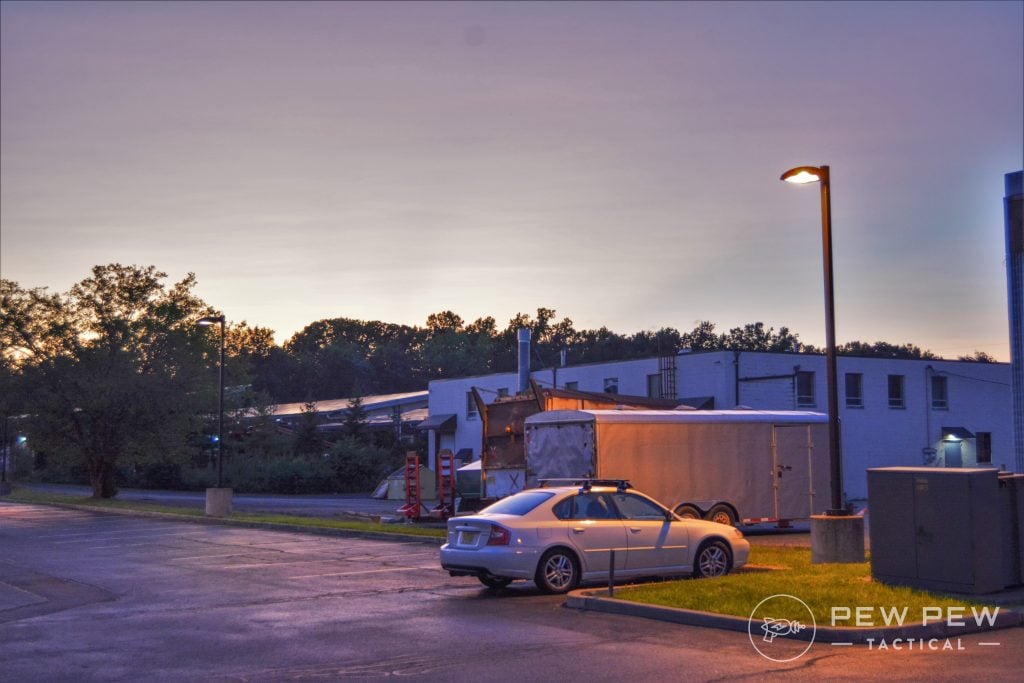
One way you can have a backup plan as an American citizen is to invest in an emergency solar power setup. This provides a means for you to harvest the sun’s power to generate at least some of your own electricity, giving energy in potentially perilous times.
But there are lots of options on the market, so how do you know what’s worth getting? Lucky for you, we at Pew Pew Tactical fully analyzed the marketplace to bring you the best emergency solar power setups.
If the ability to still make coffee, keep your fridge cold, and have some lighting in your house sounds interesting…then read on.
THE QUICK LIST
-
Best Pocket-Sized Solar Model
-
Budget Solar Panel Pick
-
Best for Bugout Bags
-
Best Medium Sized
-
Best Power Station
-
Heavy Duty Solar Generator
Table of Contents
Loading…
How We Chose the Best Emergency Solar Power Setups
For this article, we focused on emergency power setups that offered great features and good value. Our staff has a range of experience in survivalism and prepping — from hobby preppers to previous law enforcement with experience in search and rescue.
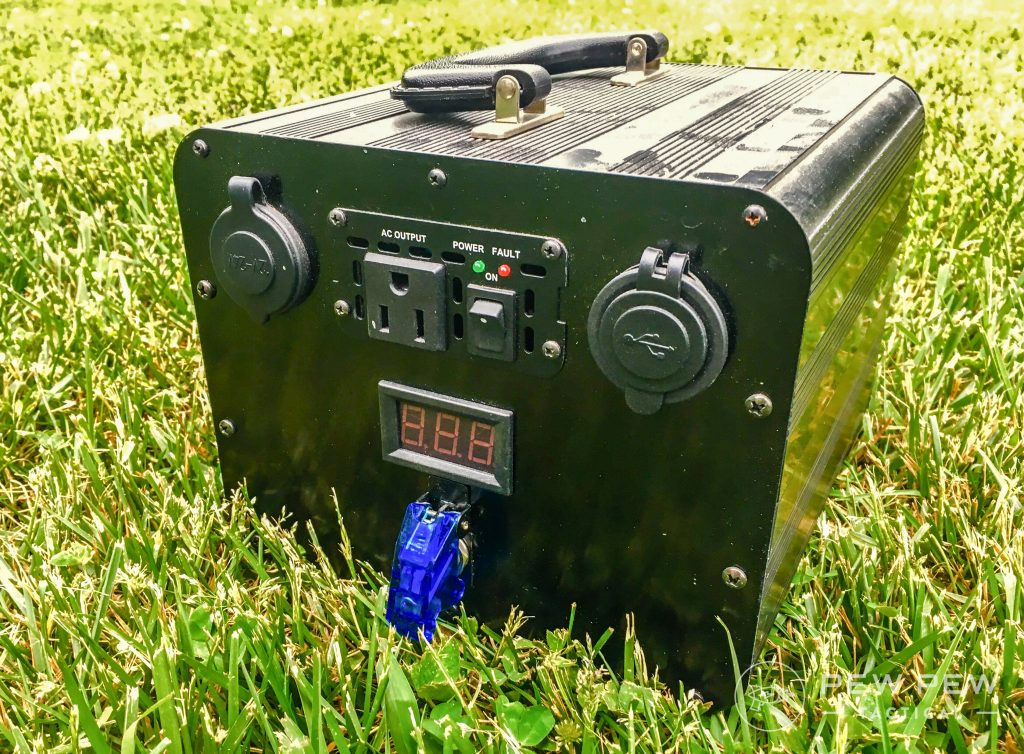
All the recommended power setups have either been tested in hand by someone on our staff or has undergone extensive research.
Best Emergency Solar Power Setups
Note that we’re looking at the best emergency solar setups.
While having solar panels installed on the roof of your house or keeping a dedicated solar panel setup in your backyard is beneficial, that’s not what we’re interested in today.
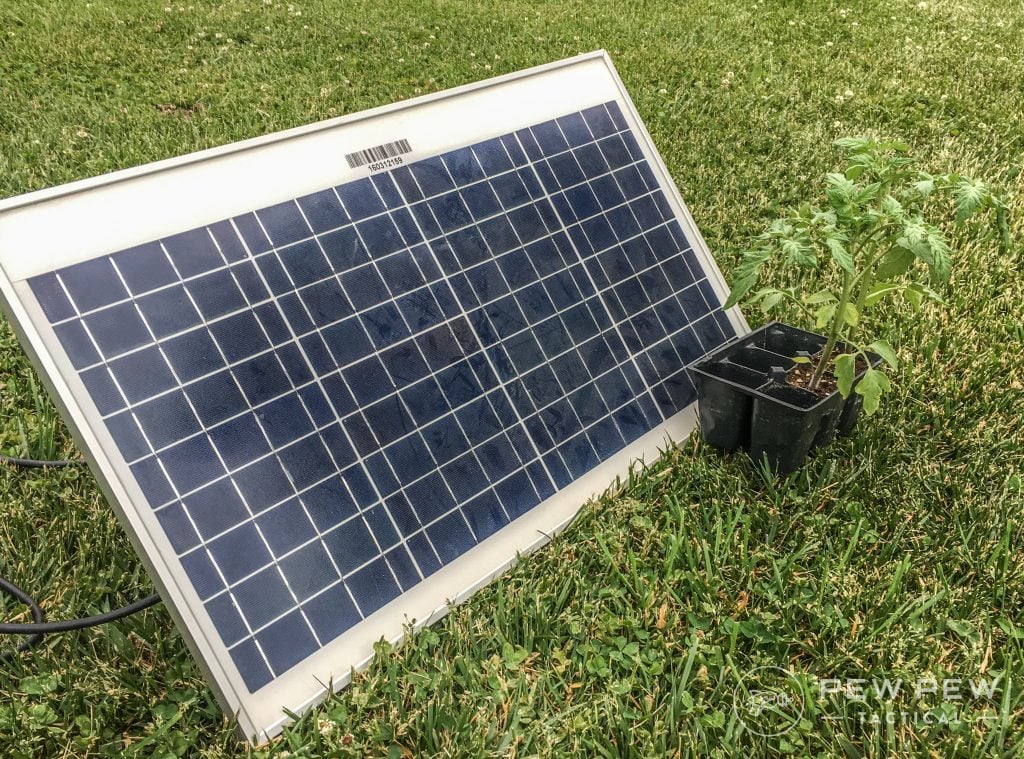
Instead, we want to focus on what kind of solar panel setups we can implement quickly and efficiently in an emergency.
As such, we’re primarily emphasizing portability.
These are all setups that you can keep stored in a basement or garage until you need them; pull them out and set them up to provide quick access to electrical power.
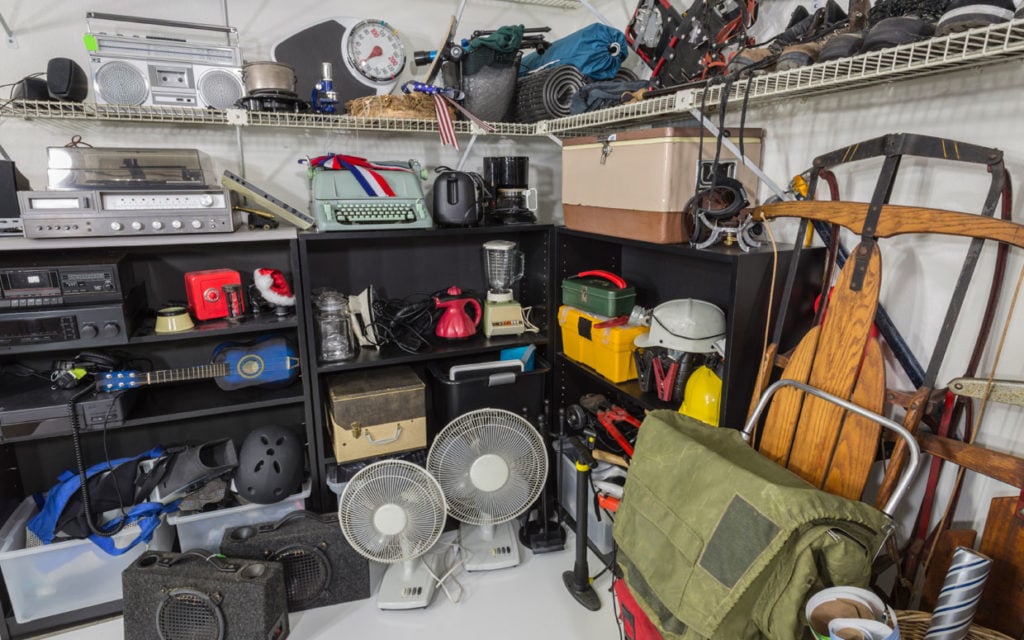
1. The Patriot Power Cell – Best Pocket-Sized Solar Model
Prices accurate at time of writing
Prices accurate at time of writing
-
25% off all OAKLEY products - OAKLEY25
Copied! Visit Merchant
Pros
- Extremely portable
- Affordable
Cons
- Long charging time for small electronics
- No battery - charge only
This is probably the best pocket-sized solar panel on the market.
Crafted by 4 Patriots – a Utah-based survival company – the Patriot Power Cell is one of their most popular products.
They’ve already sold roughly 1.5 million of these!
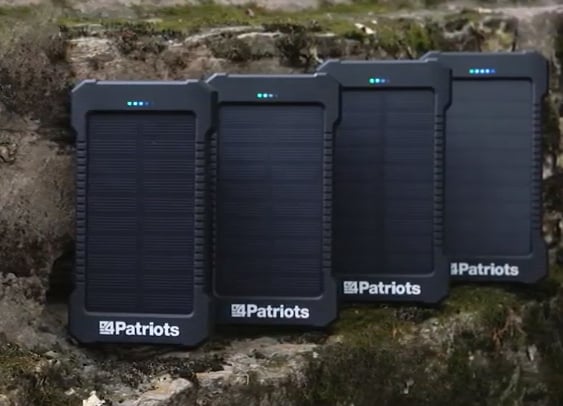
This charger easily fits into your pocket, doubling as a battery bank as well.
This means you can harvest solar energy on the spot, but you also store it for extended periods. Within a disaster situation, that’s a big deal.
The Patriot Power Cell can be completely drained approximately 500 times before dying, meaning that you should be able to get over five years of use from it.

As far as charging goes, like most emergency solar setups out there, you can either harvest sunlight or plug this directly into a wall outlet to recharge the battery bank.
Recharging via solar does take a long time for this little guy, though.
Depending on the weather, it can take up to 40 hours to completely recharge solely from solar. If you use a wall outlet, that time reduces to 6 hours for a full charge.
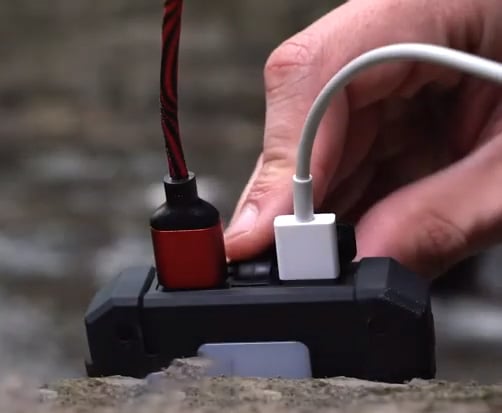
This device charges two devices at once via its two USB ports and features an 8,000-milliamp-hour capacity. It also sports a rain-resistant design, a 2-year warranty, and a 100% satisfaction guarantee.
Coming in at just around $30, this isn’t a bad deal for an emergency solar kit.
You’ll also be satisfied to know that a portion of your purchase supports American veterans via Operation Homefront, A Soldier’s Child Foundation, or other charities.
2. Renogy Portable 10-Watt Solar Panel – Budget Solar Panel Pick
Prices accurate at time of writing
Prices accurate at time of writing
-
25% off all OAKLEY products - OAKLEY25
Copied! Visit Merchant
Pros
- Lightweight
- Affordable
- Easy to attach to a backpack or car
Cons
- Long charging time
- No battery - charge only
Let’s say you’re not necessarily as interested in a power bank as you are in some form of portable solar panel.
If that’s more your speed, then you may want to check out the Renogy Portable E.Flex.
This teeny, little solar panel comes in at 14.2 ounces, easily attaching to a backpack or car window with the included carabiners or suction cups.
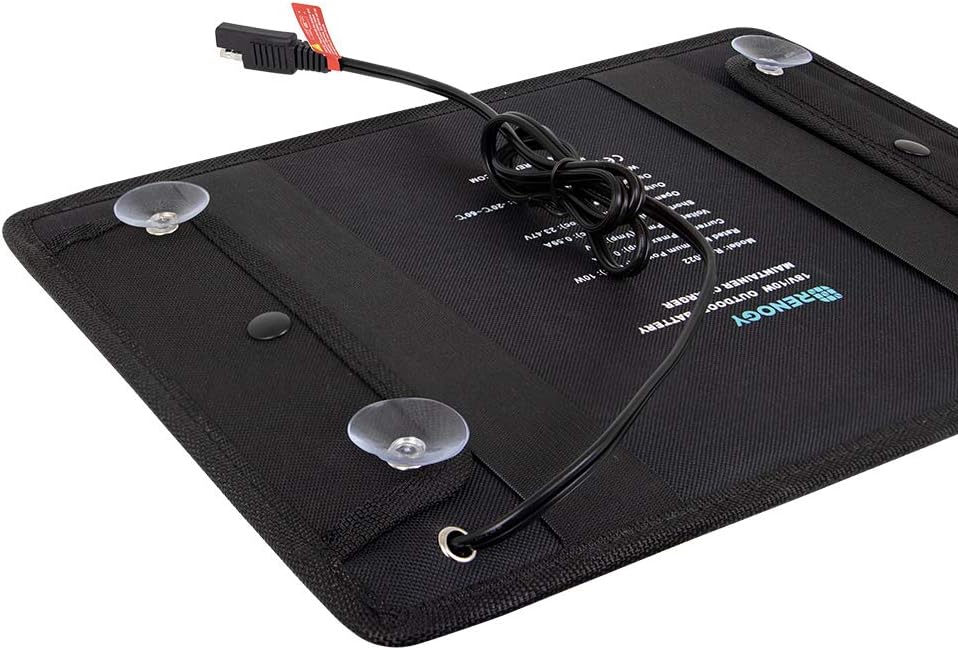
The Renogy excels at keeping your phone, Baofeng UV-5R, or some other type of small device charged without breaking the bank.
For all of $25, it’s hard to beat a solar panel like this.
Just keep in mind that it will take several hours to charge anything when you’re talking about panels this small.
3. BigBlue Foldable 28-Watt Solar Panel – Best for Bugout Bags
-
25% off all OAKLEY products - OAKLEY25
Copied! Visit Merchant
Pros
- Foldable for easy storage
- Lightweight
- Overcharge protection
Cons
- No battery - charge only
Perhaps one of the most convenient ways to have constant electricity on the go is to use a foldable solar panel that slips into a backpack.
For that, consider the BigBlue panel.
I really like this setup for several reasons.
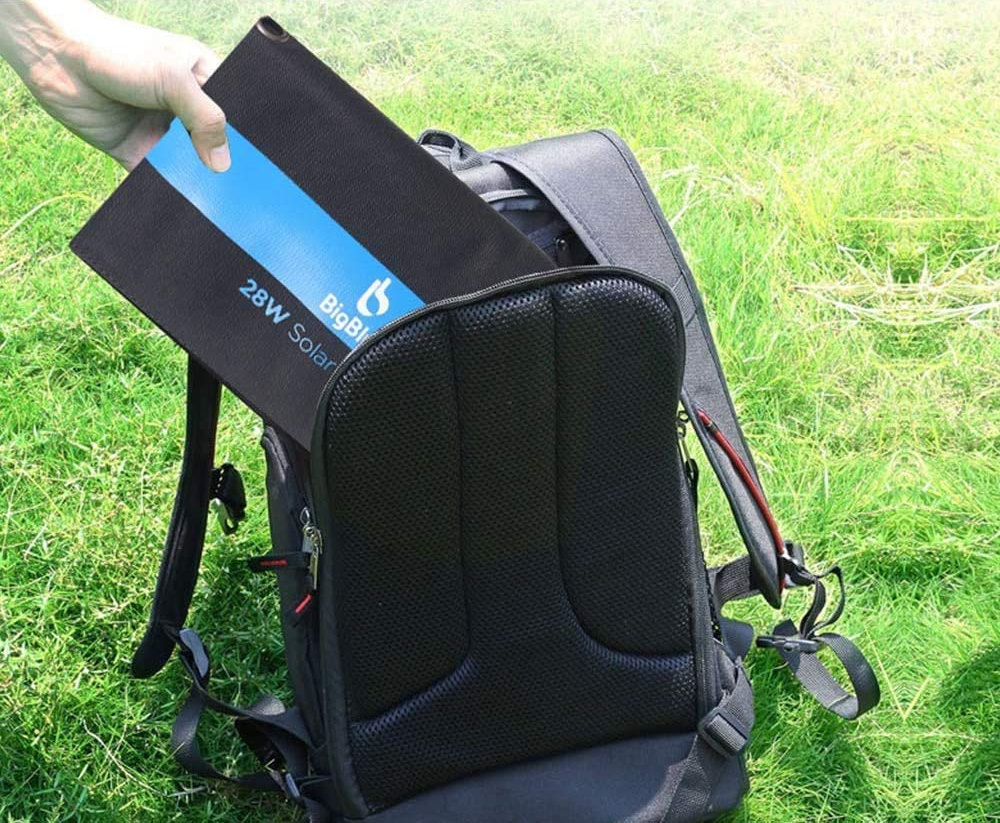
For starters, if you’re looking at packing a bug-out bag for your family, this is a great means of ensuring you keep radios, phones, laptops, or whatever else you might need to be charged while on the road.
It all weighs just a little over a pound and folds up to the size of a magazine, meaning you can easily carry this with you without sacrificing a lot of “weight space” for other necessities.
Just find a sunny location, unroll the BigBlue, and plug in your devices to the included USB ports. The BigBlue also adopts safeguards to keep it from overcharging your equipment.
When you combine all these factors, you end up with an excellent means of emergency power.
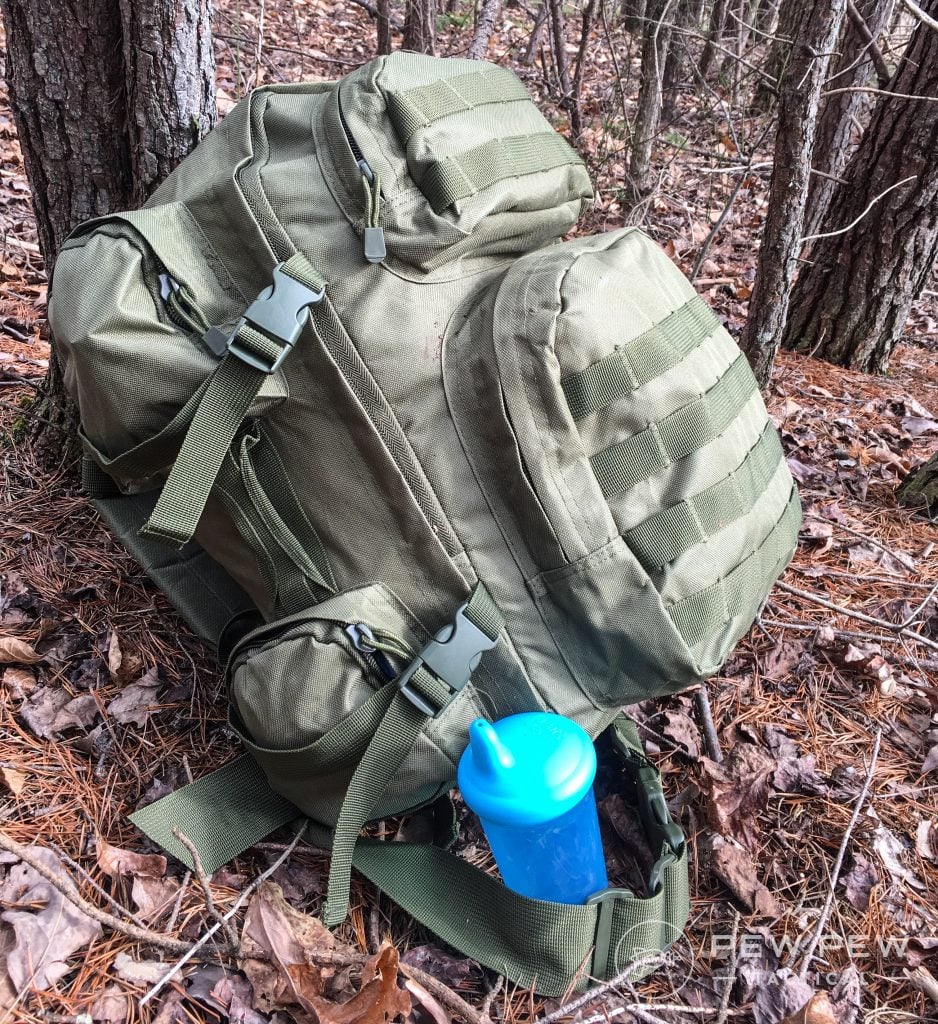
However, just be wary that this one doesn’t include a battery — all it does is charge.
So, if you’re looking for a system that can also store energy, you need to either invest in something else or purchase a battery pack.
4. Patriot Power Sidekick – Best Medium Sized Solar Power Setup
Prices accurate at time of writing
Prices accurate at time of writing
-
25% off all OAKLEY products - OAKLEY25
Copied! Visit Merchant
Pros
- 8 various outlets for flexibility
- Solar panel included
- Can power medium-sized electronics
Cons
- Lower wattage can lead to overheating if too many devices are plugged in at once
Another cool product from 4 Patriots, the Patriot Power Sidekick, weighs in at 8 pounds and comes with a 40-watt solar panel.
It offers a 300-watt capacity, making it perfect for charging your phones, laptops, radios, medical devices (think a CPAP), and the like.
A compact device, it easily stows away in the trunk of your car for when you need it or tucks into storage in your RV.
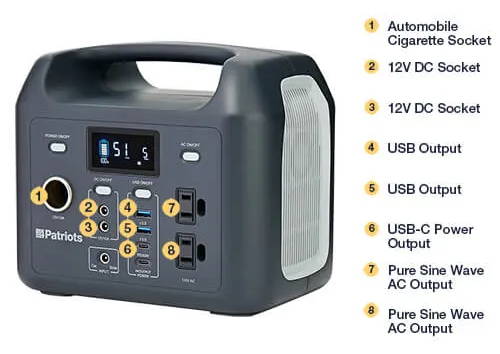
The battery is safe to use inside, and the eight outlets allow you to charge several devices at once.
It can be completely drained 2,000 times — meaning you’ll get years out of this setup. At $500-550, that’s not a bad deal at all.
5. Jackery Portable Power Station Explorer 500 – Best Power Station
Prices accurate at time of writing
Prices accurate at time of writing
-
25% off all OAKLEY products - OAKLEY25
Copied! Visit Merchant
Pros
- Solid wattage for its size
- Multiple outlet types for flexibility
Cons
- Solar panel not included
Jackery is another company well-known for creating quality emergency power stations. The Explorer 500 is no exception to that.
However, if you purchase the Explorer 500, you’ll need a solar panel to accompany it.
I recommend adding one of THESE to the setup. The panel is $300, so you’re talking about an $800 investment to get up and running here.
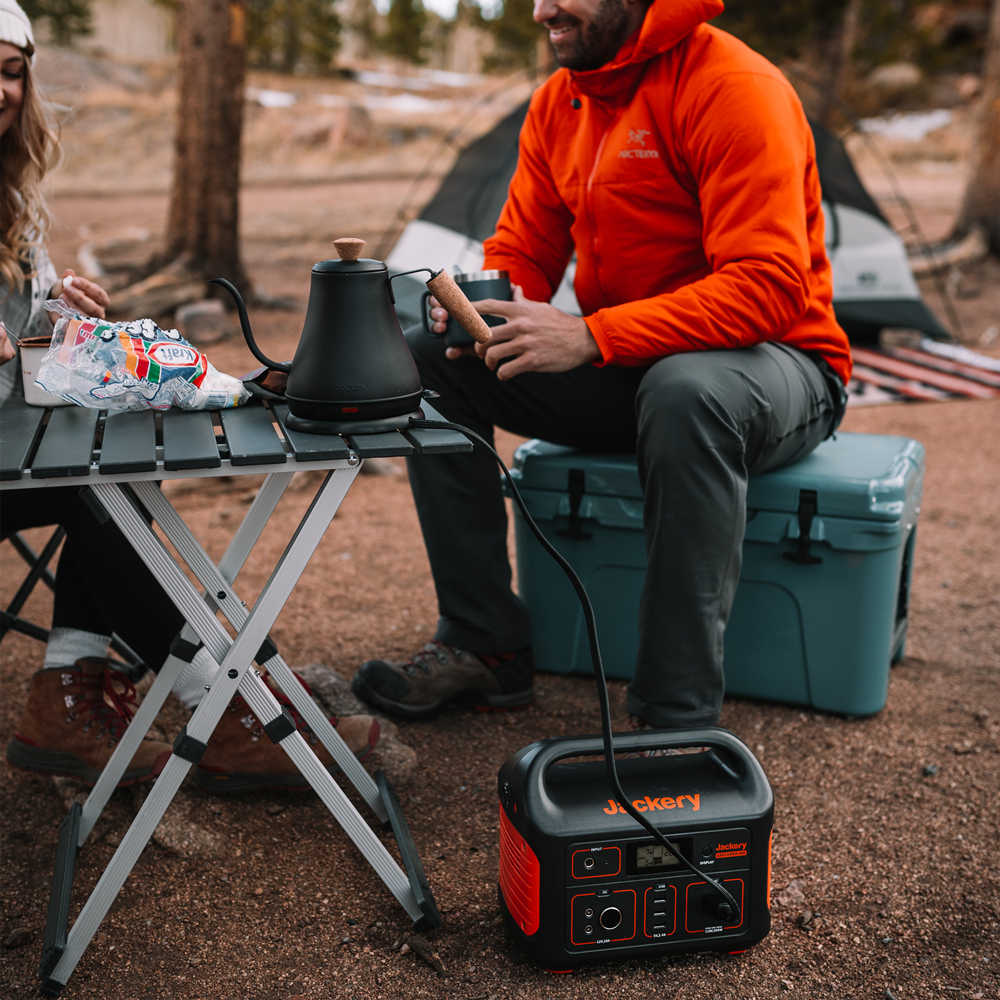
With this setup, you’ll have a relatively lightweight (13.3 pounds for the generator) emergency solar power station to keep all your devices under 500 watts in use.
If there is no sunshine, the Explorer 500 can be charged with either a wall outlet or a car charger in 5.5 hours.
So, you have various ways to keep this generator up and running should you find yourself in a grid-down environment.
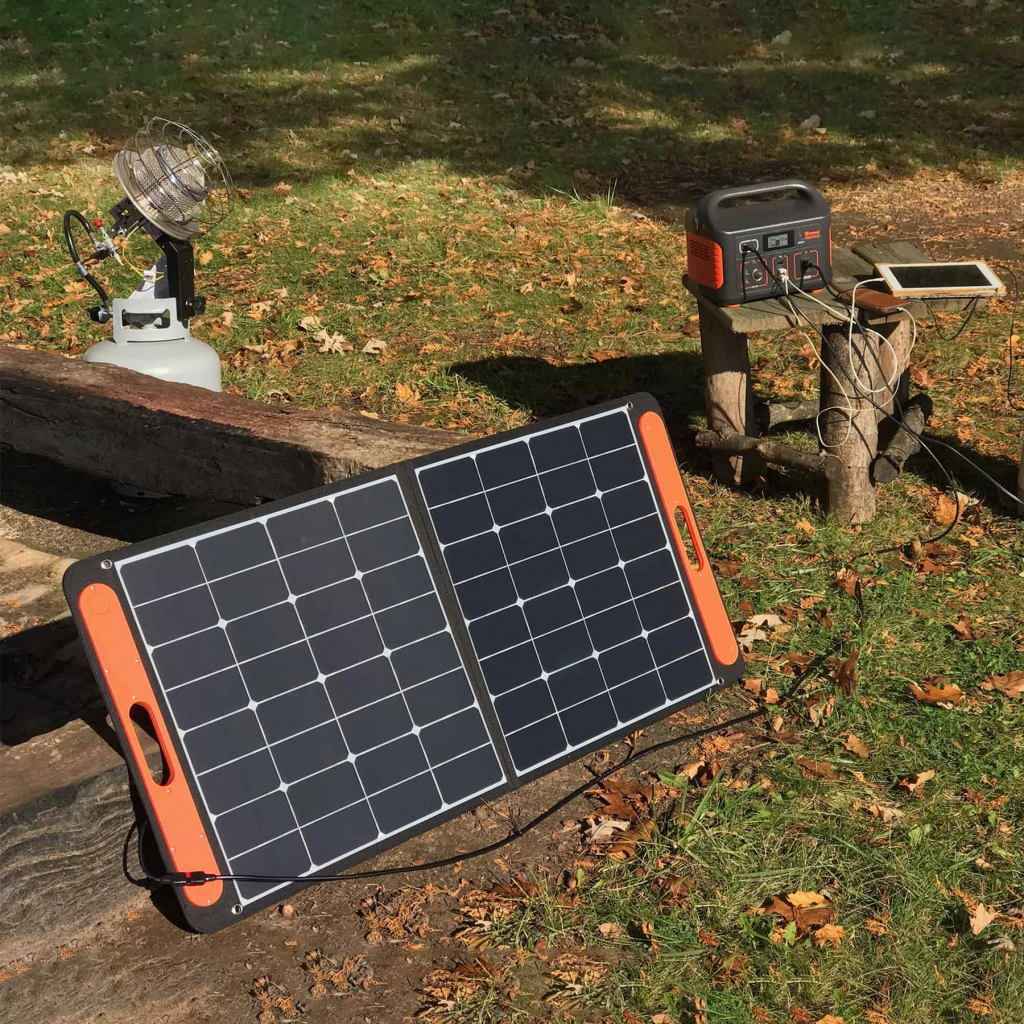
Anytime you’re in a disaster situation, the more layers of security you can add, the better.
The Jackery Explorer 500 helps you to do just that.
Have you tried the Jackery? If so, rate it below.
6. Goal Zero Yeti 3000x – Best Heavy Duty Solar Generator
Prices accurate at time of writing
Prices accurate at time of writing
-
25% off all OAKLEY products - OAKLEY25
Copied! Visit Merchant
Pros
- Can run up to seven devices at once
- 2000 watt-hours
- Can handle large electronics for extended periods
Cons
- Solar panel sold separately
- Heavy
Goal Zero is easily one of the most famous emergency solar companies out there.
Within various ham radio forums I’ve frequented in the past, this company gets mentioned again and again.
The Yeti 3000x is a big generator with 2,000 watt-hours. It can run seven devices at once and tackle the big stuff, like fridges, freezers, sump pumps, you get the idea.
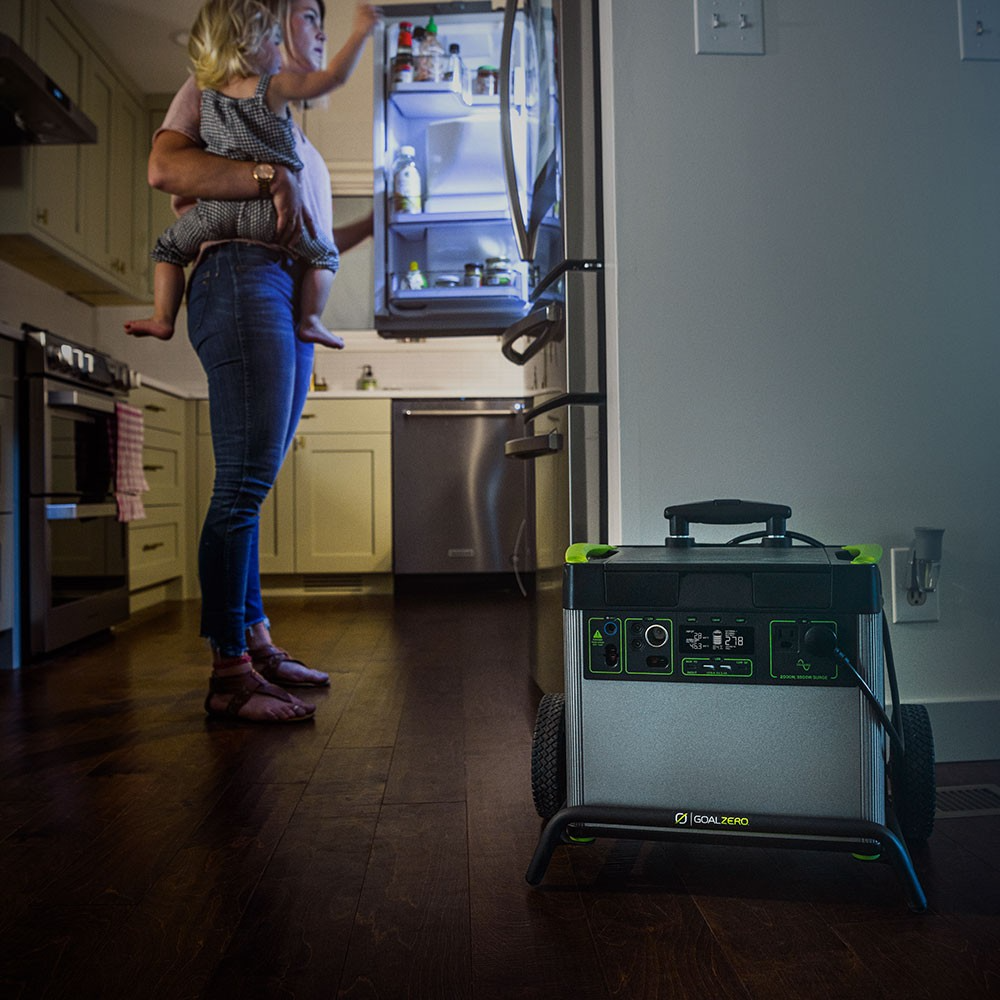
You keep the whole rig charged up by plugging it into a wall outlet. But this generator does not include a panel. So, if you want to add a solar panel to the mix, you’ll need the Goal Zero Boulder Briefcase (an additional $300).
All in all, it’s a big setup—the panel alone weighs 24 pounds, and the generator weighs a whopping 78 pounds—but it fills the void of something heavy-duty.
Plus, it will help you avoid a lot of headaches after the power goes out.
Do I Really Need Solar Power?
As we mentioned earlier, the electrical grid is fragile. As of 2018, the average American lost power for a total of 5 hours per year.
Where I live, that’s a low number. Really low.
After the last bad derecho, where I lived was without power for three weeks or more.
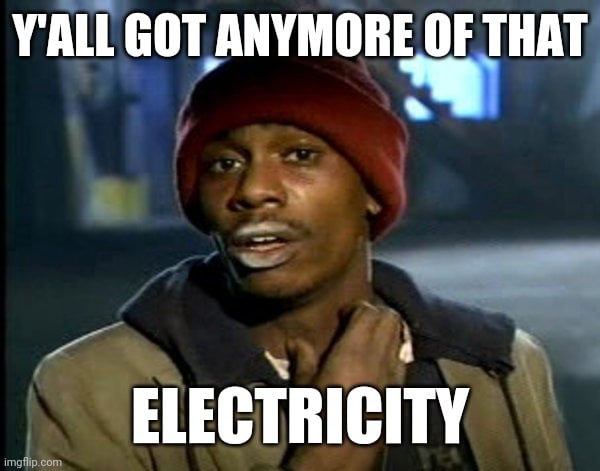
And yeah, I get that the above number is an average for the entire U.S.
Most people don’t see a derecho every year, but it’s worth mentioning that the number of natural disasters in the U.S. is increasing.
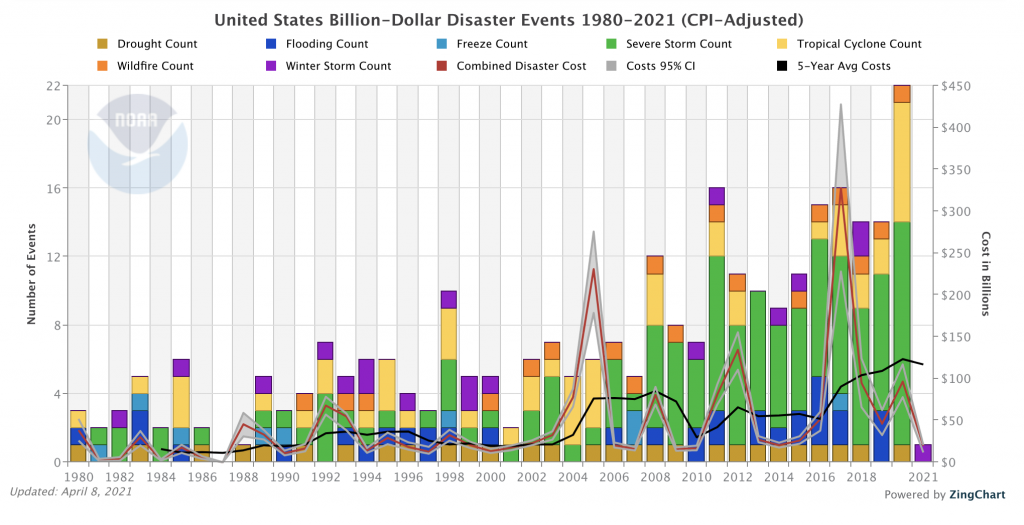
It’s also worth mentioning that access to nuclear weapons means some countries have EMP capability.
If you’ve read the 2008 EMP Commission Report, then you know its findings concluded that within the span of one-year post-EMP, 90% of Americans would be dead.
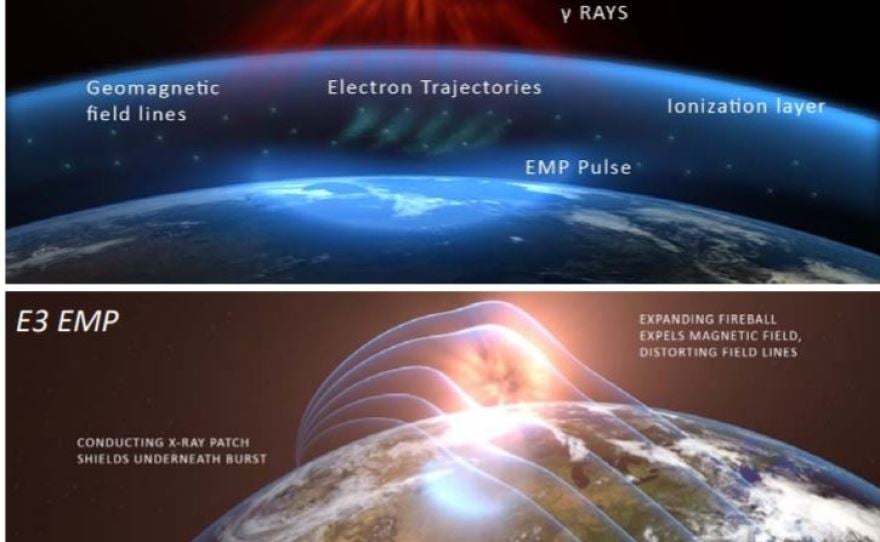
Violence, starvation, temperature extremes, lack of medical care, and disease would lead many Americans to the grave.
However, harvesting your own electricity from the sun is one very easy step that can give you a thicker layer of resiliency against disaster.
How Solar Power Works
The sun is the key to all of this. The sun gives off light, right? Well, that light is electromagnetic radiation.
And before you get your underwear in a knot after hearing the word “radiation,” solar radiation isn’t necessarily a bad thing.

In just over one hour, the sun will give off enough electromagnetic radiation to power the entire world’s power consumption for one year.
That’s a lot of energy. And if we can capture it, we can utilize it.
Thankfully, we do have a way to capture that energy, and it comes from this — photovoltaic cells (PV, for short).
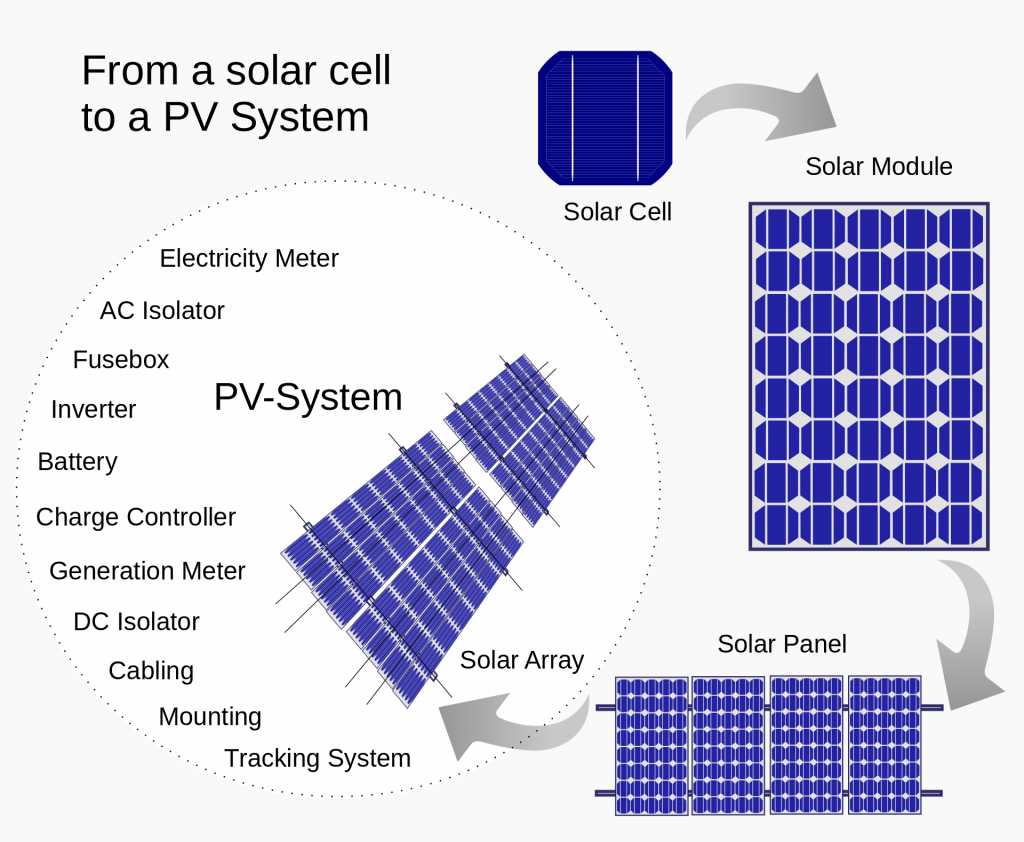
When exposed to sunlight, PV cells absorb its energy, causing electricity to flow.
Technically, PV cells absorb sunlight, which creates electrical charges within the solar panel. An internal electrical field within the PV cell pushes the electrical charge along, and thus, you end up with an electrical flow.
But that’s all engineer gibberish.
All you need to know — PV cells capture sunlight and turn it into electricity. If you have that down, you’re good to go.
Final Thoughts
Power outages will and do happen – they’re a usual occurrence throughout the U.S. So, an emergency solar panel system can easily help you eliminate several problems you’d face when the power goes out near you.

By investing in any of the above devices, you mitigate your risk of disaster post-power — whether that be for a few hours or a few weeks.
Are there other aspects of solar energy capture that you think we should have considered? Let us know in the comments below! Now that you have electricity figured out take a look at how to stay fed with our tips on the Best Way to Store Food Long-Term.
Latest Updates
September 2024: Removed Rockpals SP003 (discontinued) and Patriot Power Generator 1800. Updated information on the Patriot Power Cell and Renogy 10W panel to reflect newer models.

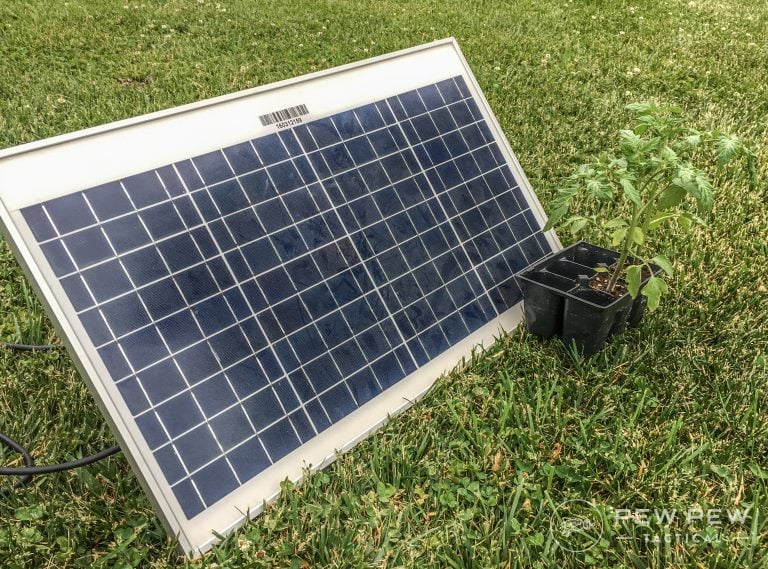













10 Leave a Reply
The ad for the patriot power cell says, under cons, charge only no battery but further down it says, "This charger easily fits into your pocket, doubling as a battery bank as well."
both cannot be right
The bigger issue is having too many devices that need power. Simple as that. As with a home solar installation, the reputable vendors - in the day - did a energy audit and insisted on homeowners updating old outdated appliances and the HVAC to lower the load needed to supply. I've been thru this over the years, we pay no more now for electricity than in 2004. It's worth the effort.
And when we did get into a tornado or ice storm, we relied on our propane powered camping equipment. Why? No Jackery is going to be a source to cook breakfast, lunch, and dinner. We'd pull out frozen while stacking in more ice bags and behold, holiday level meals during the "crisis" of no power, all on a two burner Coleman. A lot of us with children make very different choices, and those 20 pound grille tanks go a lot further. Look to RV's and how they are configured, along with ultralight backpacking and the micro isobutane stoves. I'm gonna have my morning coffee, regardless. It may be a quick stick of Folgers in hot water in the field or on the deck hearing a thousand limbs cracking. Sadly, more firewood for next year. I still benefit.
Now bounce the costs of a solar panel and huge power bank vs a 2000 watt inverter duel fuel genset and see where you land. That inverter doesn't need to run full blast like the older models, 2 hours and the frig/freezer kicks off, you shut down and leave it alone overnight and it's still good. We still used solar in our escapades - yard lights came in for a bathroom light, went back outside to recharge. Watch? Solar powered since the 90s. Im not a Luddite, solar has it's place, and can do a great job.
When the power goes out, there are other resources, but the current push to solar also has a creepy side - look up the history of the gas powered generator, and you can see it glossed over, even ignored now. Too many cut and past "history" sites don't discuss the Maytag single cylinder washer motors of the 1930's - before rural electrification - or tractors with PTO generators for electricity. No mention of Briggs in the US building aluminum motors prewar, supplying generators to the War Department in WWII, or their expansion into supplying power for remote projects in the 50's. If the dam isn't built, you can't get power from it at the construction site. Gas and diesel powered generators did that, just as they do now. A lot of farmers keep one in the back of their field truck, along with a air compressor - necessary tools keeping a tractor running or using equipment. And what recharges a power tool battery better, a solar panel, or a genset running to recharge those 2 and 5 watt lithiums in the field? Got recharger? Contractors make that effort, a vehicle inverter is part and parcel of the work day. In fact, it's also part of camping now - radio, lights, fan, compressor - all fueled by a 18/20V power pack. Some take a leaf blower to clean out the slide out guides from leaves and debris. Smart operator.
We want the comforts of home, it's still dollar for dollar better with a ICE generator, and the better application now is propane powered for it's very long term storage ability. Not to forget, the newer models of inverters are 50db quiet - and you can add a shroud to cut that noise down. Its not hard to get a 50% reduction in noise, which anything over 4000 watts can use just to keep peace in the neighborhood. BTW, those old big generators do not need to run 24/7, again, get the freezer to cycle off, leave the door shut, they go for days keeping things cold. You do keep a list of what is in them, right?
Then we get into how do you heat something in the dead of winter when it's been cloudy, 28F, and three inches of sleet cover the ground for three weeks. You do not bug out, and a diesel heater may be a better ally keeping the pipes from freezing than a 10k burner on a camp grille. Yes, my circumstances are that much further ahead. It's my next purchase for not only keeping a basement warm, but also hunting season.
For the money, ICE generators and other petroleum fueled appliances are still a bargain per watt or BTU, not that the internet is telling us that today. DO the math and you will see who profits.
These are all crappy little camping units. If all you want to power is a lamp, coffee pot and a radio fine. Serious survival requires larger capacity. Thinking Anker, Bluetti and other big players. Lots more $$
This post has good information. I would really like to see you get a couple of the biggest units with the largest power capacities and then install them for a test to exhaustion. I would be very interested in your experience installing them and then how long they lasted. I would probably want to buy a long-lasting power supply that was relatively easy to install and use. Living in southern California, I realize each day brings us closer to the big one.
Your source for your claim about natural disasters increasing isn't valid. Even adjusting for inflation doesn't account for population growth and the greater wealth of the average American over the same number of years. There are more of us and we all have more to lose even after adjusting for inflation. There could be less actual natural disasters but they could each be causing more damage and thus more of them crossing the billion dollar threshold used. More objective, weather based standards for determining what qualifies as a major event would be more informative.
I was getting ready to write this same post. The number of "disasters" isn't going up, just their expense. This is largely due to increased population density and real estate prices in coastal areas. This is one of the "climate crisis" crazies favorite fake statistics.
keep in mind that none of these are likely to function after an EMP, unless they had been stored in a faraday cage.
So your saying I should build a faraday cage around my house?
Just put the device in a metal container such as a garbage can. It will protect your devices.
Mission Darkness has some great faraday cages that some of these would fit inside. I highly recommend checking them out.